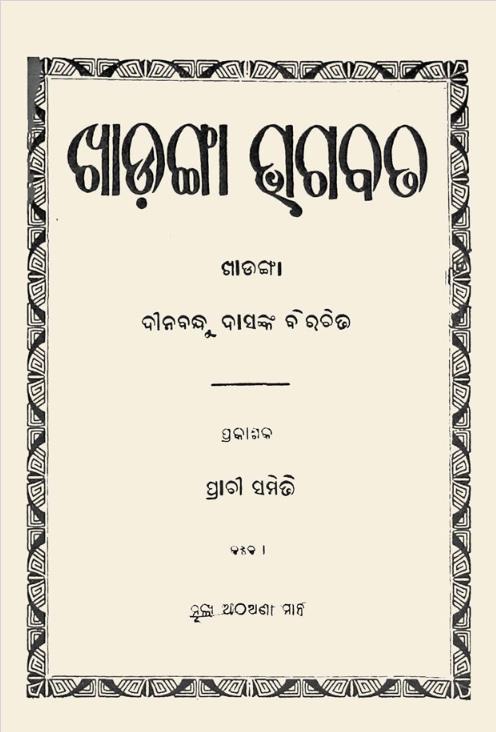In the rich tapestry of Odia literature, few works stand out as vividly and powerfully as Khadanga Bhagabata, a sub-epic authored by the revered writer Dinabandhu Das and edited by Bichhanda Charana Patnaik, published in 1932. This monumental text is not merely a retelling of mythical narratives but a profound exploration of human existence, spirituality, and ethical dilemmas woven into the fabric of Oriya culture.
Khadanga Bhagabata draws its inspiration from the traditional Bhagabata narratives, which are deeply entrenched in Hindu mythology, specifically the tales surrounding Lord Krishna. However, what sets this work apart is Das’s inventive narrative style and his ability to infuse contemporary themes and socio-political issues into the age-old stories. The title itself, Khadanga, which means sharp or keen in Odia, suggests a piercing insight into the human condition.
The narrative structure of Khadanga Bhagabata is richly layered, seamlessly intertwining ancient myth with the struggles of individuals in modern society. Das’s characters are vividly portrayed, each embodying distinct traits that reflect both the divine and the mundane. The sub-epic delves into themes of devotion, morality, and the quest for truth, integrating these elements into a compelling and profound storytelling experience.
At the heart of Khadanga Bhagabata is the character of Krishna, depicted not only as a divine figure but also as a relatable guide through life’s trials. The interactions between Krishna and other characters serve as a narrative device to explore various human emotions and moral questions. This representation aligns with the broader trend in Odia literature at the time, which sought to reconcile traditional belief systems with the realities of contemporary life.
Dinabandhu Das was not only an accomplished writer but also a social reformer. His literary work often intersected with his ideological beliefs, advocating for social justice and equality. Khadanga Bhagabata reflects this ethos, showcasing characters who challenge societal norms and strive for personal integrity against the backdrop of divine intervention. This sub-epic thus becomes a mirror to the society of its time, prompting readers to reflect on their own beliefs and actions.
With Bichhanda Charana Patnaik’s editorial insights, the 1932 publication of Khadanga Bhagabata received significant attention, further elevating its status in Odia literary circles. The meticulous editing ensured that the depth of Das’s ideas and the vibrancy of his prose resonated with the readers, making it not only a religious text but also a cultural artifact that bridges the past and present.
Khadanga Bhagabata remains a vital work in the canon of Odia literature, demonstrating how ancient narratives can be revitalized and made relevant to modern audiences. The sub-epic is a testament to Dinabandhu Das’s literary prowess and his ability to navigate the complexities of human emotions through the lens of spirituality.
In conclusion, Khadanga Bhagabata is more than a literary endeavor; it is an exploration of the multifaceted nature of existence, laden with wisdom that resonates across generations. For those seeking to understand the essence of Odia culture and literature, Das’s work is an indispensable and enlightening read, inviting reflection and introspection on the paths of devotion and morality.
Books Info
| Books name | Khadanga Bhagabata / ଖାଡ଼ଙ୍ଗା ଭାଗବତ |
| Author | Dinabandhu Das; Bichhanda Charana Patnaik, Ed. |
| No Of pages | 226 |
| Publisher | Prachi Samiti |
| Publication | 1932 |
| Printed At | NA |
| Distributor | NA |

